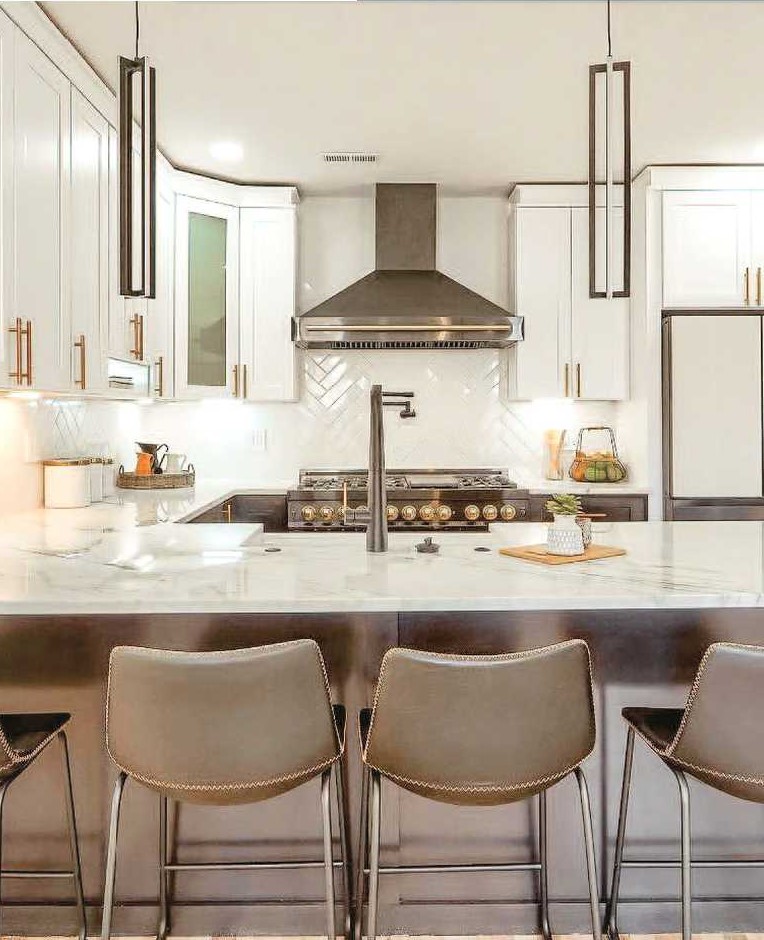Video Tutorials
RTA Cabinet Assembly Tutorial
Watch this video tutorial and follow the steps listed below to learn how to assemble your RTA cabinet with a drawer.
Tools Needed:
- Hot Glue Gun
- Rubber Mallet
- Power Drill
- Screwdriver
- 18 Gage Nail Gun
Particle Board Box:
- Open the box containing the main cabinet, and sort pieces based on size and type.
- Empty the bag of hardware on a flat surface and sort. Be careful not to lose any pieces. There should be 8 cam-lock screws, 8 cam-lock nuts, 6 half-inch screws, 4 one-inch screws, 4 shelf pins, and 4 plastic corner supports.
- Lay the two large side panels on a flat working surface (they are the ones that are irregularly shaped).
- Screw in the cam-lock screws at the top and bottom of the side panels into the pre-drilled holes.
- Take the remaining long board (this is the back panel of the cabinet) and slide it onto the cam-lock screws of one of the side boards.
- Carefully place a cam-lock nut in each hole with the cam-lock screws.
- Secure the cam-lock nuts with a screwdriver.
- Slide the panel that is the length of the side panel and height of the back panel into the slot near the top of the side panel. This is the bottom of the cabinet.
- Insert the small remaining panel into the proper slot along the front of the cabinet, inserting the dowels into the correct hole.
- Gently tap the panel with a rubber mallet to make sure that it is aligned.
- Lay the other panel with the cam-lock screw system on top of the cabinet base.
- Insert cam-lock nuts into the cam-lock screws, and screw in with a screwdriver.
Face Frame Carton:
- Open the other box that came in the shipment, this should contain the face frame, drawer, and other parts.
- Empty the bag of hardware on a flat surface and sort. Be careful not to lose any pieces. There should be 5 half-inch screws, 2 glide mounts, and 1 sheet of self-adhesive bumpers.
- Place the two glide mounts onto the cabinet structure near the top, making sure that the open side is towards the middle of the drawer.
- In each of the four screw locations, drill a pilot hole.
- Screw in the glide mounts with two screws on each mount.
- Place the face frame flat on a working surface.
- Insert the cam-lock screws into the pre-drilled holes on the face frame (2 near the top and 2 near the bottom.
- Lay the face frame on top of the cabinet, making sure that the cam-lock screws align into the appropriate holes.
- Secure the cam-lock screws with the cam-lock nuts.
- Open the package containing the long L-shaped metal drawer glides.
- Slide them into the plastic glides that you placed in steps 3-5, ensuring that the open side is towards the middle of the cabinet.
- Screw the top of the drawer glides into the face frame panel.
- Attach the front panel of the drawer to the sides of the drawer by sliding them into place along the dove tails. Gently tap with the mallet to align the panels.
- Grab the ¼ melamine panel (the bottom of the drawer) and slide it into place on the sides and front of the drawer you just created in step 13, finished side up.
- Attach the remaining drawer panel, the drawer back onto the other pieces of the drawer by sliding it into place into the dove tails provided.
- Gently tap the drawer with a rubber mallet on all sides to make sure that it is properly aligned.
- Take your 18 gage nail gun, (if desired) and pin nail the drawers together along the dove tails.
- Hot glue the melamine panel along its four sides where it touches the sides of the drawer to keep it from vibrating.
- Insert the drawer into the drawer glides on the cabinet.
- Attach the four drawer bumper on the inside corners of the face frame of the drawer, as well as on the two corners of the cabinet.
- Screw the four plastic corner supports into each corner of your cabinet.
- When you place your cabinets in your kitchen or bathroom, the four long screws will go through the middle hole of the corner supports up into the counter or cabinet above.
Shelves
- Insert shelf pins at the desired height, making sure that all 4 pins for one shelf are at the same height, and that the flat side of the pin is facing up.


